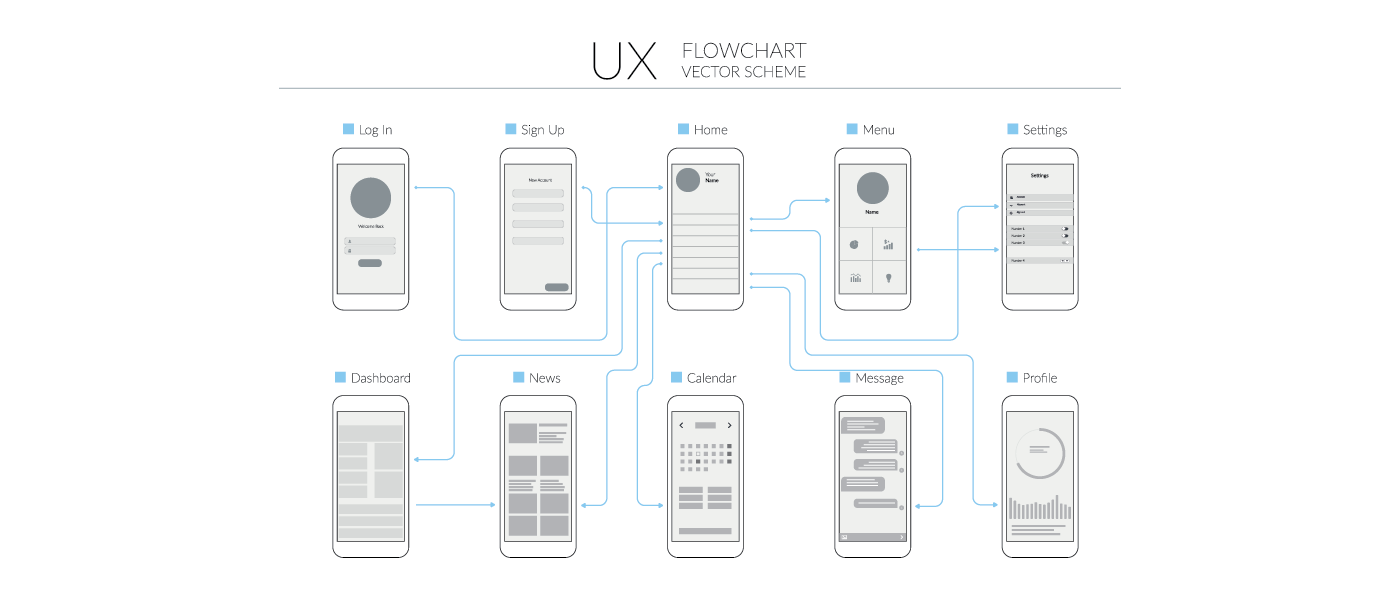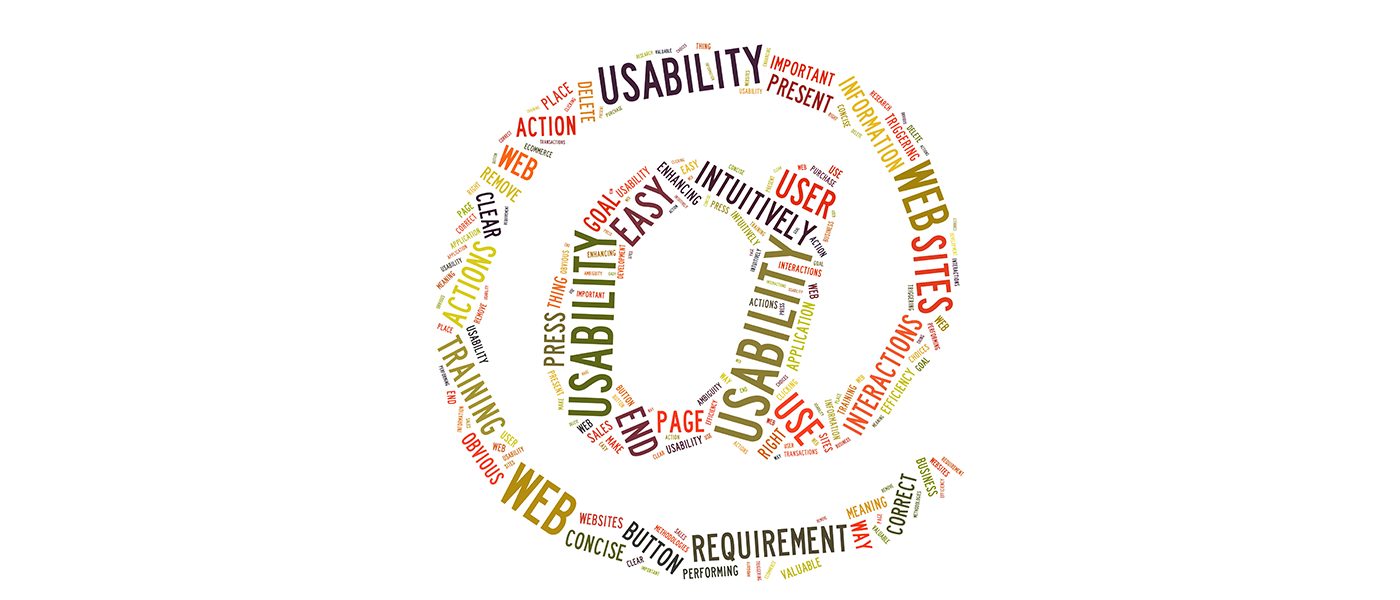Category: Business
From snake oil peddlers to the thirty-minute infomercial, we’ve seen it all when it comes to sales techniques. One thing is certain, though. Today’s consumers will not respond to “old school” sales practices. No longer will a “one-size-fits-all” sales approach work.
In a marketplace where consumers can have almost everything “their way” right away — from lunch to the day’s news — successful selling must be built upon an authentic appeal that resonates and offers a solution to a problem.
Seeking that authenticity and discovering that need doesn’t have to be difficult. Today’s most effective sales teams use data to market and sell effectively. McKinsey and Company surveyed more than 1,000 sales organizations worldwide and “found that 53 percent of those that are ‘high performing’ rate themselves as effective users of analytics.”
Customer data is a far more reliable business building tool than preying on someone’s emotions, using a fear tactic, or broadly throwing out a sales pitch and seeing what sticks. Here’s how your sales team can use it to serve existing customers, attract new ones, and make more sales to grow your business.
Discover your ideal customer’s most pressing need or pain point
Effective sales begin with a relationship. Gone are the days when a pushy, generic, persuasive approach produced sales. Today’s customer wants to be known and understood. They need a problem solved or a question answered. You’ll make a sale — and a long-term customer — when your product or service solves their problem or takes their pain away.
In “7 Old School Sales Techniques You Must Avoid,” HubSpot’s Marc Wayshak writes, “Prospects don’t care about your product or service. They only care about the problems you can help them solve. Instead of pitching your product, ask effective questions to discover each prospect’s deepest frustration. Then present a solution to solve that challenge.”
A basic survey tool can help you discover what your customer’s most pressing need is. Compiling all clients’ existing purchases within your CRM or marketing automation software and then looking for patterns can also reveal what problem buyers are trying to solve.
Sales reps should habitually keep notes on each client to document where the client is in the sales funnel, what transpired during the previous conversations, items for follow-up, and any personal info that becomes a topic of conversation.
Taking all of these information-gathering techniques together, you can compile the data to reveal your customers’ greatest need and many facets of it:
- Is it constant or occasional?
- What exacerbates it?
- What solves it?
Get to know your customers — who they are and what they like
Who is your target customer?
The more you know about your target customer, the more effective all your marketing and sales efforts can be. This type of data can help you become more focused on whom you serve, and therefore, can help you create a narrower offering.
The more specific your offering, the more likely your sales will increase, plus it’s a more efficient and economical use of your time, money, and resources. You know you are creating something that’s needed and you’re taking it right to the very customers who are desperate for it.
“Only focus on talking to prospects who are a good fit for what you have to offer,” writes HubSpot’s Wayshak. How do you figure out which prospects are a good fit? By examining the data!
Basic demographic data can help you pinpoint and create a highly receptive pool of qualified leads for your sales reps. Find out the basics about your customers:
- Age
- Gender
- Location
- Income level
- Interests
- Purchase history
Drilling down to figure out basic demographics helps you target advertising and craft specific messaging to make all of your sales efforts more effective. In today’s noisy world filled with non-stop marketing messages, yours will have a much better chance of cutting through to your intended customer if it’s tailored to their interests and needs.
Examine and predict buying behavior to retain customers and attract new ones
While criminal psychologists may disagree about the popular quote from TV talk show host Dr. Phil McGraw, “The best predictor of future behavior is past behavior,” it’s quite relevant when it comes to buyers in the marketplace. Data about your customers’ past behavior can be extremely valuable as you mobilize your sales team.
Statistics show that repeat customers are more likely to buy again. According to Marketing Metrics, “The probability of selling to an existing customer is 60 – 70%. The probability of selling to a new prospect is 5-20%.” When existing customers become legacy clients, that’s actually a boost to your bottom line. Customer retention is more valuable to your business than customer acquisition is. Frederick Reichheld of Bain & Company found that “increasing customer retention rates by 5% increases profits by 25% to 95%.”
Current customers’ experiences with your product or services can help you know best how to provide valuable customer service, which ensures a long-term partnership. This data is also helpful in reaching out to leads to nurture new client relationships.
Look at your clients’:
- Previous purchases
- Behavior before, during, and after a sale
- Lead origination
- Previous responses to specific messaging
After the data is collected
It’s also helpful to take the data from these three categories and examine them in light of one another. Where do they intersect or overlap? What patterns emerge? What questions about your customers are still unanswered?
The more you demand of the data, the more informed you’ll be about your clients.
And the more informed you are, the more effective your sales team will be.
Stay up to date on what's new

Featured Blogs
Stay up to date on
what's new



Talk To Our Experts
Overview
What follows is an exemplary story of an Odoo implementation in just 3 days! Hard to believe right? We just did that for our internal sales team last month! Odoo is well known in the ERP world for its really short implementation durations and flexibility to accommodate changes on the go. We wanted to share the experience of how we went about selecting Odoo from the gamut of ERP/CRM platforms available in the market today and managed to implement it within 3 business days.
Why we needed a CRM?
This implementation story started when our sales team experienced difficulties in managing leads for one of our products ‘ReachOut’, a custom field services management platform. When we started out with ReachOut, we had about 3 or 4 signups weekly and emails were sufficient for our Sales team to handle., However, as the number of leads grew rapidly, it became increasingly difficult for the sales team to manage with only emails. To tackle these challenges, we considered the need for a proper CRM software and saw a lot of potential in Odoo due to its flexibility and short implementation durations.
Here is a short video of Odoo’s features for a sales and marketing function. [Source: Odoo]The Implementation
After the Sales team were previewed with a demo using default Odoo CRM features, they were instantly convinced that it will ease their workflow and improve productivity to a large extent.
Upon implementation, our convictions proved right as the managers were content with the way they were able to seamlessly track their team’s work.
The next step was an integration between Odoo and ReachOut, a couple of hours of development, followed by deployment, which was done on a server with specs as minimal as 2 CPU, 4GB of RAM and a one hour training for the sales team followed by UAT for a day, we were all set to start using the system!
And to add to the benefits, Odoo User documentation is available online for most of the major apps in the system which is really easy to follow and something that anyone from a non-technical background can understand.
Yes, three days is all it took to implement a CRM system for a sales team that was handling hundreds of leads per day. The fact that Odoo is very flexible and one of the most sustainable ERPs gives us more confidence about implementing other modules for various team in the organization. And as I’m writing this, we’re all set to roll out Odoo HRM in our company, but that’s another story which we will definitely touch upon another day.
Impact of Odoo CRM
The problem we had prior to implementing Odoo CRM was that the leads had to be picked and assigned manually from the emails that came in. The follow-up process was really difficult to manage since it was not so organized, and there was a lot of effort being wasted in maintaining excel sheets to track the leads.
Enter Odoo, and the assigning process is totally automated. Follow-ups became more organized, and the managers are getting really good insights into the activities of the team members. The status of every lead that each member is working on has become more transparent, and the management team feels that Odoo CRM will definitely improve the sales numbers as the processes are getting streamlined.
Why should you consider Odoo CRM for your organization?
The amount of consumer data generated for business owners is increasing on an hourly basis. Without the proper tools to handle all these customer information, decision making, forecasting, purchase and sales processes have become a great chaos in terms of efficiency.
The Odoo CRM deals with aspects of the business like:
- Sales tracking
- Prospecting
- Recording customer interactions
- Pipeline management
- Evaluating marketing campaigns
Since satisfied customers are your most valuable asset, imagine what a unified system that includes major business apps and a VOIP system would do for your business.
A system like Odoo which has capabilities of adapting to the growth of your company is something that every organization that needs a CRM should consider. And people often make the mistake of choosing big names in the CRM arena, whereas something more flexible and integrated with other business apps that can be deployed as the company grows is a much better choice any day for an SME.
We can definitely go on and on about the advantages of Odoo CRM, but considering that your time is precious, all we can say is that this exercise showed us how even a small sales team can use Odoo for the benefit of their customers. We hope this story may help other growing SAAS companies save time, improve visibility and manage customer relationships using Odoo.
Stay up to date on what's new

Featured Blogs
Stay up to date on
what's new



Talk To Our Experts
Cybersecurity statistics reveal that cybercrime is one of the greatest threats to any business. Not accounting for it can result in a loss of crucial and sensitive data and large recovery costs. With increasing attacks on critical infrastructure, stringent security requirements must be in place to protect businesses from threats. Today, hackers have become more formidable thus being informed about cybercrime will prevent a loss of data and profits later down the road.
This infographic will cover the scope of vulnerabilities that could be present in your company and ways to safeguard the IT Infrastructure:

Investing in cybersecurity is essential for protecting your business. Contact us today to plan a cybersecurity strategy especially for your business.
Stay up to date on what's new

Featured Blogs
Stay up to date on
what's new



Talk To Our Experts
Computers are getting faster and smarter with each passing day. It has been spearheaded in a direction where computers are taught to mimic natural human intelligence, a concept and now a reality known as Artificial Intelligence (AI). Since its coinage in 1956, AI has been predicted to lead computing for automating and substituting all human processes, particularly in the industry and commerce.
Processes like supply chain management, which needs relentless focus and labor in all its operations can benefit deeply from the use of AI. With the developments in AI moving at breakneck speed, companies have already invested in AI for managing their supply chain. The result is complete automation from production to delivery along with an overall improvement in efficiency and speed.
The application of AI has made the entire process of supply chain management more streamlined and accurate. It takes human labor out of the process, which is one crucial aspect companies look forward to reducing costs and errors. Meanwhile, AI is proving advantageous to other areas of supply chain management as well, which resulted in more companies adopting it into their workplaces.
Let’s digress a bit to talk about what artificial intelligence is about. Artificial intelligence is about taking the capabilities of Machines in terms of Intelligence beyond the monotonous processes, and adding a dash of autonomy to the decision-making capabilities. The advent of artificial intelligence has expanded the capability of automation and technology and has forayed into a Territory of operations that was once reserved only for human beings.
When it comes to the application of artificial intelligence, many industries and segments have benefited from it. One among those is the domain of supply chain management. Supply chain management is gaining importance by the day going to the disappearance of Geographic and physical borders when it comes to transactions.
As inferred by Gartner, the application of artificial intelligence in the field of supply chain management can be broken into two categories:
Augmentation: 
Augmentation is really a sophisticated word for addition. Artificial intelligence is seeing its uses even in everyday activities like setting an alarm using personal assistant like Google Assistant or Siri. This kind of Artificial Intelligence can be used in spaces where the guy does not have complete control over the outputs, but rather augments the human effort with some intelligence that needs to be essentially gathered from monotonous tasks.
AR has transformed the software used in supply chain management. AR help truck drivers, warehouse workers, and management keep track of products by overlaying information onto the real world. Augmented reality is used efficiently in “pick and pack” service. In a large warehouse, AR enables to locate products easily and pack them. Logistics robots can easily scan a product for damage, check its weight and adhere to package shipping instructions.
Automation:
Automation seems to be the password in every industry. There are certain instances where the process is so simple that Artificial Intelligence can take over the entire process including the final output. This completely eliminates the need for human intervention. With this elimination of human intervention, the probability of error is also greatly reduced. One fine example would be the implementation of robots in performing a few key steps when it comes to the manufacturing industry.
The future of supply chain management How will technology and AI shape tomorrow [Source: University of Liverpool Online]A few specific aspects in which Artificial Intelligence can assist in supply chain management are:
Using chatbots: 
We have been using the internet as a communication medium using instant messengers for a while now, and the conversation generally starts with a templatized set of questions. These templatized questions and the conversations surrounding them can be automated using a chatbot. Chatbots help in streamlining the procurement related tasks through automation and augmentation. These chatbots can be used to help with the initial steps of procurement. The information that we receive from this chatbots could also help determine the validity of the leads.
Chatbots can be used to automate numerous tasks especially in communicating with the customers via direct calls or text messages. The advancements in chatbot programs have enhanced their communication abilities, which have made them useful aids for a variety of tasks besides answering calls or queries. Most chatbots are able to place purchase request, conduct research, answer questions, file and document invoices alongside communicating with the customers.
Supply chain planning and machine learning:
Machine learning is the technological twin of artificial intelligence. Intelligence can only be achieved by learning, and if machines have to be intelligent, they have to learn automation. Supply chain management can incorporate machine learning, even if not for execution, at least for planning. Machine learning can help in a variety of aspects in supply chain planning.
Machine learning can help with the forecasting of inventory based on demand and supply. Facilitating the machine to learn with the right segments of data could also bring in a revolution in terms of agility and optimization of even the decision making processes in supply chain management. Teaching the human beings something is an arduous task -stitching machines the same thing only makes it a little bit more challenging. However, you can expect the Machines to learn things a bit faster and get more accurate with the time then you can expect human beings to be!
Machine Learning for Warehouse Management: 
Warehousing is an integral part of any Logistics Company, and it requires a good understanding of the inventory, the demand, the supply and the challenges in facilitating a smooth transition between the two ends to be successful in the field of Logistics.
Machine learning and artificial intelligence come in handy at this juncture, because the planning and Management for warehousing depend on the intelligence that can be gathered from the data. The data can analyze vital pointers, including the supply floors like overstocking or understocking, and even the kind of inventory that we are looking at, including the attributes of longevity and susceptibility to damages when in storage.
Natural Language Processing for Data Sanitization:
The last couple of aspects that we have been looking at talks about data point data is very important to make calculated decisions. If the data is not like it, the decisions might not serve the purpose of being beneficial for the business. Therefore, it is essential to ensure that the data is clean and business-worthy.
Natural Language Processing, commonly abbreviated as NLP, is an element of artificial intelligence that takes care to decipher foreign language data, and streamline them in a way that it can be used for data processing. With the humongous amounts of data that the logistics industry Encounters, it is important to sanitize the data before it can be used to make important business decisions. The aspect of Natural Language Processing develops with Machine Learning and artificial intelligence.
Related Webinar : Artificial Intelligence in layman’s termsAutonomous and Self-Driving Vehicles:
Thanks to the innovations by Elon Musk and the automobile company Tesla, self-driven cars are no longer an element of science fiction. Self-driving vehicles have started to take over the realm of montane transportation. If there is one territory where this advancement can make a significant impact, it has to be in the field of logistics and shipping.
Driverless trucks might be in the nascent stages of development, but the progressive only point towards a positive conclusion. If driverless trucks are introduced, it can overcome a lot of hurdles, especially with respect to the mandatory crest that humans require. The laws in most of the countries mandate that drivers can only engage in 11 hours of break-free drive. With driverless trucks stepping in, the driving can go on effectively for 24 hours, and it will definitely reduce the cost by at least 25%.
With the advent of e-commerce on both B2B and B2C fronts, logistics is only gaining more importance by the passing day. A lot of eCommerce companies depend on the data from the logistics service providers to make more calculated decisions. By incorporating the latest in the world of Technology like the concepts of machine learning and artificial intelligence, it would not be right to say that the logistics industry would be far ahead of its time, because, in today’s world of rapidly changing advancements, it is important to be technologically advanced to even stay in the race!
Stay up to date on what's new

Featured Blogs
Stay up to date on
what's new



Talk To Our Experts
Here are 8 ways how a good transportation management system could make a difference to your business if you are a 3PL or NVOCC operator.
With the expansion of world trade and multinational business activity, more and more organizations are keen on operating globally and making their presence felt in the global market. Transportation and logistics play a huge role in helping such organizations expand their business and establish new business relationships. Large businesses prefer building their own teams to handle their supply chain & logistics requirements.
However, research reveals that more than 80 percent of all Fortune 500 and Fortune 100 companies use some form of 3PL (Third Party Logistics) services to handle their logistics and supply chain processes. This is because third-party logistics providers usually have a huge network, which offers a competitive advantage over in-house supply chains. Outsourcing logistics also help the organization by saving time, effort and money involved in maintaining the in-house logistics process.
3PL is, therefore, a highly competitive market and providers must compete to win and retain their clients. Providers typically specialize in transportation, warehousing, order management and other integrated services, which can be scaled or customized to meet the customer’s specific need.
Challenges faced by 3rd Party Logistics Service Providers
Time Constraints
Effective utilization of time is one among the most critical factors that determine the success of any logistics service provider. 3PL providers should be able to support customers by minimizing the inbound lead time, i.e., the amount of time taken from the point of placing an order to the point the shipment is received by the customer. To achieve this, providers should be able to effectively communicate and coordinate with the shipping agents, transport carriers, customs agents, etc. on a prompt and timely basis.
Lack of Infrastructure
Lead logistics providers are 3PL providers without their own assets, who have specialized industry expertise along with low overhead costs. However, they have lower negotiating power since they have with them fewer resources to offer compared to other service providers in the market. In such a situation, the success of the 3PL provider depends on their ability to partner with independent transport carriers and offer competitive rates to customers.
Documentation
It is a difficult task for small and mid-sized 3PL providers to keep track of information related to all their shipments. There are different types of documents involved in international trade transactions. These include purchase orders, bills of lading, air waybill, cargo insurance certificates, commercial invoices, packing lists, delivery note, certificates of origin, dock receipts, export licenses, etc.
Management of transport documents is a challenging task due to the administrative process involved, large volumes of documentation, transfer of the document and ownership of goods from one party to another. Logistics service providers must ensure that the right set of documents are transferred between the shipper, consignee, notify party, transport carriers and other parties involved in the transaction.
Lack of Reporting Systems
In most cases, the upper-level managers working with 3PL service providers and Non-vessel operating common carriers (NVOCCs) tend to focus on their core activity of transportation and logistics management. This leads to situations where they do not have enough visibility or insight into the other functional areas of their business. Depending on the size of the business, poor management of the business processes and resources could result in the loss of up to hundreds of thousands of dollars each year.
Benefits of a Transportation Management System (TMS)

3PL providers could utilize transportation management systems to refine their existing processes and improve overall efficiency. There are many ways of automating the logistics process, including tracking and monitoring each delivery. Some of the key features offered by Transportation Management Systems include:
Order Management
Transportation management systems help logistics service providers (LSP) to streamline their order management process by integrating their ERP and distribution modules. This adds a lot of value to LSPs, especially in situations where they have to manage large amounts of shipment or order data from multiple sources. It also offers customers the ability to track the status of their orders or shipments.
Document Management
Supply chain transactions involve various sets of standardized documentation flowing from the buyer to the seller, documentation required for trading or banking requirements, and also by customs authorities. In case the shipper, consignee or notifying party does not have a dedicated team to handle their supply chain & logistics process, LSPs play a vital role in managing the documentation and supporting them in complying to commercial laws like the Incoterms. Transportation management helps in automating the documentation process and allows for the generation and transfer of shipping documentation using the system.
Electronic Data Interchange (EDI)
EDI has become a crucial part of modern business, allowing for the electronic exchange of business documents between trading partners. It helps service providers to communicate with their trading partners and electronically transfer documentation like purchase orders and invoices. EDI solutions help by leveraging various transaction sets like:
- 204 – Motor Carrier Shipping Information: Used by shippers to tender an offer for a shipment to a full truckload motor carrier.
- 210 – Motor Carrier Freight Details and Invoice: Sent from the carrier to a shipper, consignee or third-party payment center for payment of freight charges.
- 214 – Motor Carrier Shipment Status Message: Used by transportation carriers, such as trucking companies, to provide shippers and consignees with the status of their shipments.
- 990 – Response to Load Tender: Used by motor carriers to indicate whether it will pick up a particular shipment previously offered by the shipper.
- 997 – Functional Acknowledgment: Serves as a receipt, to acknowledge that an EDI transaction or a group of transactions was received by the remote party.
Rate Sheet Management
Freight rates are made up of a complex combination including the type of load, base rate, surcharges, equipment charges and other additional charges. Cargo may be transported in various loads depending on the mode of transportation, for e.g., as FCL (Full Container Load) or LCL (Less than Container Load) in case of sea freight. Each mode of transportation could, therefore, have an implication on the rate of the shipment. Transportation management systems help LSPs to create rate sheets for the specific service they offer and assign them to a customer or vendor based on the contract and rates agreed. Shippers can access the system at their convenience and manage or review the applicable rates before they place the order.
Dispatch Management
Dispatch management provides the capability to dispatch, deliver and track shipments. It allows LSPs to track the shipments, review driver activity, locations of pickup and delivery, manage load types like FTL or LTL, split trips, etc. A good dispatch management software could help LSPs to consolidate shipments from various customers and review the dispatch process handled by different vendors, which in turn saves a lot of time. It offers a business opportunity for owner-operators and independent drivers, to engage with the 3PL or NVOCC provider and track their upcoming, ongoing or previous shipments by using the service providers system.

Fleet Tracking
Smartphone-based GPS-tracking systems provide logistics service providers, especially trucking companies, with real-time information regarding their shipments. 3PL and NVOCC operators will be able to track the location of trucks managed by their vendors and assign shipments or orders to the relevant trucks based on their GPS location and route.
Warehouse Management
Warehouse management systems allow 3PL companies and NVOCC to manage customers, processes and billing schedules. The system enables access to real-time information and provides integrations with warehouse management technologies, including e-commerce shopping carts and QR or barcode scanning. The software also helps operators to manage different stock levels in warehouses, streamline the supply chain process, and satisfy customers by keeping them updated and informed on the status of their cargo.
Data Warehouse ETL and Reporting Tools
Logistics service providers have to handle large amounts of data related to shipments, their weights, sizes and contact details or returns on a regular basis. This leads to an incredible amount of information over time that has the potential to be analyzed for identifying business trends. This, in turn, could help the service providers to take important business decisions based on real-time data. It would also help conduct detailed cost-benefit analysis to improve profitability and optimize on-time deliveries to ensure customer satisfaction.
Timely and reliable delivery can mean the difference between repetitive business and a one time sale. Hence, the ability to plan, optimize, execute, analyze, and react to every logistics requirement is a critical factor that determines the success of any 3PL provider. Transportation Management Systems help 3PL providers to streamline their business processes and resolve any operational challenges that they are facing. It provides a competitive edge and improves their ability to manage and dispatch orders, with a lesser lead time. A good transportation management system could thus help 3PLs to reduce transportation costs, lower total cost of ownership and increase customer satisfaction.
Stay up to date on what's new

Featured Blogs
Stay up to date on
what's new



Talk To Our Experts
Any client needs to know how a proposed app is likely to work and impact their business. It will provide them with an insight into the functionality of the app and how it helps the end users. This is where wireframing comes into play as an essential part of mobile app development. A professional app development company can use wireframing as an essential tool for laying out the functionality, visualization, navigation, UI and preliminary function of an app.
Wireframes have a significant role in the design process. As yet, wireframing has been the most effective way to detect usability issues early on in the design process. Wireframes typically do not include color, graphics or stylized fonts so that the reviewer is least distracted and focused on the user flows and user experience. In what follows, we will highlight why wireframes constitute a vital part of the app development process.
App Designers consider Wireframing an Ideal Building Block
 Wireframes are essentially a visual conception that illustrates the screen interface of an app. Usually conceived as black and white layouts, the wireframes outlines how different elements of the app like pages, navigation, and conversion portions are laid out. As a blueprint, a wireframe ensures the level of attention in design and UI so that it remains practical for the end user.
Wireframes are essentially a visual conception that illustrates the screen interface of an app. Usually conceived as black and white layouts, the wireframes outlines how different elements of the app like pages, navigation, and conversion portions are laid out. As a blueprint, a wireframe ensures the level of attention in design and UI so that it remains practical for the end user.
It lays out the skeleton of the app which portrays the page‘s interface (elements spacing, content prioritization, and functionalities) and how users interact with the site. Wireframes act as the vital link between the information architecture and the visual aspects of the design.
Moreover, wireframes act as a visual representation of how the user manages different scenarios and achieves the business objectives. It acts as a site architecture with links provided in each of the wireframes so that a clickable model is built for getting a full demo experience of the app.
Wireframing is the stepping stone for an app to become successful, which also have numerous other benefits.
How to Create a Wireframe [Source: SmartDraw]Wireframing Tools – Key to Navigating the Flow of the App
A wireframing tool will help you understand how to create an app or website essentially easier by visually paring the product down and focus on the functionality and user interactivity of your product.
Clients need to be educated on how your proposed app or website will work. A written or verbal explanation would leave major functionalities down to their imagination, giving way to more errors. This situation is not helpful for you or your client. It is here that wireframing tools can play a significant role in squaring that circle.
Wireframing tools differ with varying levels of functionality some of which can be used purely for simple wireframes, while others to create a working prototype. Some wireframe tools take you through the entire process of roughly sketching your wireframes, creating sitemaps, flowcharts, and storyboards; collaborating them with others, and building functional prototypes.
The Boons of Wireframing in App Development
What wireframing does is to create a visual framework of the entire app. It steers clear from complex flowcharts by substituting with an understandable model that eases the workflow and accelerates the app development process. The following is a check-list of the benefits of using wireframing in application development: 
- A Walkthrough of the App
The blueprint of the app laid out through wireframes will give the client a clear picture of what the app is about and its functionality. Using wireframes, the client can suggest changes or improvements so that the final app design remains in accord with their goals. A proper wireframe is essentially a walkthrough of the app that guides the clients and developers to focus on building the app solely with the end user experience in mind.
- Improves Development Process
Wireframes aid real-time communication within the team, which helps speed up the development process. It eliminates design errors as the wireframes can provide insights into the workflows to be used by each section of the development team. The improved app workflow helps the team to focus on the responsiveness of the app using regular feedbacks. Such a method is very useful if a deadline is looming large.
- Aids Interactive Apps
Some apps need good animation display such as in case of a gaming app. An interactive app requires a blueprint for visualizing all the ideas, designs and features. Wireframing allows just that as it gives developers the means to preconceive the visual and moving elements within the app. This will give them an estimate of how the interactive elements of the app functions and the effect that it has on the user experience.
- Allows Easy Changes
With a wireframing tool, it is easier to make the necessary changes during the app development process. The wireframing model allows the clients to suggest the necessary changes during the actual development. Developers can then work on these suggestions easily by making the relevant changes to the app. Any changes made will instantly reflect in the app, which allows the development team to implement the client suggestions right away.
- Minimizes Overall Project Costs
Having a good wireframe for an app can cut down the costs involved in its development significantly. The client can request the necessary changes when previewing a demo of the app through the wireframes. This prompts the development team to work on these changes in the initial stages of building the app. Changes or additions during the final stages usually prove costly. A wireframe eliminates this and quickens the process of making the app ready for the launch.
Building a great wireframe
At Fingent, wireframes are a complete reflection of our client’s unique requirements. Our team makes it a point to understand our clients not just from a technical perspective but from an emotional perspective as well. This helps us address their requirements better so that the end results always remain fruitful. For that purpose, we employ a standard process of wireframing to build apps with rich user experience and responsiveness. Here are the major steps involved in our wireframing process:
- Understanding the client – Getting to know what the client wants from a technical perspective helps us in determining the right solution for them. But we go an extra mile to understand the client from an emotional perspective as well so that we can serve them better and do more than just provide a technology solution. We get to know what exactly is in the minds of our clients, which helps us in being proactive in our approach.
- Understanding the outcome – The first step in creating a wireframe is understanding what our client intends to do or convey through a particular app. That is, what the client wants his/her users to do. It includes finding out whether the client wants its users to do a particular action or read a particular thing or even feel a particular way after going through the page or app section.
- Creating user stories – We then create user stories which cover the list of features required in the application and also a brief description of the flow and functionality within each section. This helps us better in knowing what to use and where it is placed like whether it is best to use a checkbox or a radio button for a particular element on the page or to have a text box or drop-down menu for another element etc. While creating the wireframes, this can act as a quick reference.
- Designing the wireframes – After obtaining the required inputs from our clients, we then proceed with creating the wireframes by using a stencil kit or other simple wireframing tools depending on the complexity of the application. The wireframes that we create using this method are shared with our clients as well as our designers so that everyone can come up with better ideas and solutions.
- The user interface – While we go about the process of wireframing, we always keep in mind our client’s unique requirements. But we also make it a point to put ourselves in the shoes of the users of the app as well. This helps us understand and answer many questions that the users might have in their minds while going through the app. Together with the valuable inputs from our client, we create apps that are more user-friendly by applying the necessary changes. We preoccupy ourselves with questions during development such as ‘What does the user want?’ or ‘What will the user think?’ What we primarily ask ourselves while wireframing for apps and web pages is ‘What does the user want?’ or ‘What will the user think?’ with the aim of leading the users to what our client wants them to do.
Summing Up
In a nutshell, a good wireframe is a simplified visual concept of the future app. But they can also wreck a project if not done correctly. It helps build a mockup of the proposed app that contains its would-be features and functions.
It doesn’t give any idea about the design but helps to understand the functionality of the application, which is its definitive advantage. It enables the client, developer, and designer walk through the structure of the app without being distracted by colors or graphics.
Even though wireframing could take up some time before the development of the solution, it is always better to make your wireframes perfect and then get into development. At Fingent, we make it a point to wireframe every section of any app, as it is much more meaningful and safe for development later. Our experts assert the importance of wireframing as it allows in creating flexible workflows for easily incorporating changes. Moreover, it simplify the process for the developers and designers to begin executing once the core features and elements are confirmed.
Throughout the process of wireframing and development, we believe it is best to keep in touch with our clients on a regular basis. In this way, we are able to keep them updated on the developments and gather feedback to make sure that it ultimately meets their requirements. This approach not only helps us in our projects but also in building solutions that truly matter to our clients.
Stay up to date on what's new

Featured Blogs
Stay up to date on
what's new



Talk To Our Experts
The importance of security can never be understated in today’s age of big-time security breaches, where cyber-criminals strike at will. However, the enterprise app development team needs to make sure that the security does not impede usability, or in other words, security is not self-defeating.
Most apps and solutions tap into the corporate database and handle sensitive data, including personally identifiable information. The implications of a breach can be ruinous and even sound the death-knell of the company. However, at the same time, today’s demanding workforce and highly pampered customers seek intuitive and easy-to-use apps. Customer satisfaction is critical to the survival of the app.
The conventional approach to security is akin to adding more number of locks to the door of a house. While it makes it difficult for thieves to penetrate such a house, it also makes it difficult for the occupants themselves to enter. In the digital world, forced to log in every time, forced to log in first into the device, then log into the software, and then enter a transaction password, being forced to change all these passwords once every two weeks, being said the password is not long enough or was used previously, and more, all strengthen security, but are major irritants and impede usability greatly.
Here are some ways to balance the security-usability conundrum, or ensure security does not end-up self-defeating the very purpose of the app.
Implement Security by Design
The best approach to security is “security by design” or co-opting security during the development process itself.
When security is embedded into the planning, design and implementation phases, developers may code with security in mind, use secure frameworks, and co-opt security testing a part of the app development process.
Adding security layers at a later stage makes the entire process awkward, and hinders usability. Often tweaks have to be affected, and well-written code redone. The analogy is to manufacturing a door with a single tamper-proof deadbolt lock built-in, as opposed to adding multiple locks after the door is installed, to get the same strength.

Collaborate with all Stakeholders
App developers need to collaborate with security experts and business managers, to assess the security risks and determine the best solutions to solve underlying security issues.
If bringing the security and development team together is a challenge, establishing common ground is an even bigger challenge. Developers seek to make things as easy as possible for their customers or users. The security team remains obsessed with the safety of data, often with the attitude if someone has to wait a few extra seconds to access the data, so be it. They remain oblivious to the implications of the harried customer moving on elsewhere rather than wait or put up with a convoluted system. Google usability studies reveal even a tenth of a second delay in an app’s performance adversely affects the user experience.
A collaborative team effort, where every stakeholder is part of the prototype, design, and testing tasks make finding a common ground and workarounds easy. For instance, with a security team in the mix, developers will no longer have to figure how to securely connect to the enterprise every time they build an app. Inputs from the security team would help them build a secure connection, VPN or otherwise, which may even be reused for other apps. In the same way, security could design a secure way for users to log into these apps.
Opt for Hardware-Based Authentication
Developments in hardware technology offer an effective antidote to security vulnerabilities, without having to compromise on usability. A case in point is Apple’s Touch ID fingerprint scanner and compatible Android systems. By deploying such hardware-based security and authentication, users do not have to wrestle with irritating passwords, and developers are spared the cumbersome work in securing data and authenticating users through the application code. It also leads to faster development lifecycle and a much cleaner code.

Limit Availability of Sensitive Data
If data is not there to be stolen, it won’t be stolen.
Businesses would do well to reconsider their business model and limit the availability of data online only to the minimal extent required. Hypersensitive data may be stored in impregnable silos, using military grade authentication, quite contrary to the much-touted logic of eradicating silos to facilitate big data analytics. Only the data required for analytics may be released, on a need-basis.
Developers could also make use of Security Information and Event Management (SIEM). SIEM collects security log events from numerous hosts connected to the enterprise servers, to identify normal patterns. An abnormal usage pattern triggers alerts, and even lockdowns, safeguarding the data. At the same time, normal, routine usage is allowed unobtrusively. The challenge lies in the complexity of configuring the SIEM.
Leverage the Power of Simplicity
Leverage the power of simplicity. Simple apps, with a minimalist design, and lean coding are not just easy on the users but contain lesser vulnerabilities. Such a set-up also minimize the chance of users doing anything to compromise security. A case in point is Amsterdam-based Usabilla putting in the minimal security necessary, and nothing more for its consumer feedback service. The simplifying services and features encouraged users to follow the right path rather than take actions having potential security implications.
Hire Competent Developers
Often skills gaps, poor planning and poor understanding of the business model by the developer aggravates the usability-security conundrum. Hiring competent enterprise app developers, who have considerable experience and exposure to the business, who are able to work closely with business managers, and who are able to deploy the best tools and techniques of the trade, is the key to develop highly intuitive apps, which are highly secure at the same time.
Stay up to date on what's new

Featured Blogs
Stay up to date on
what's new



Talk To Our Experts
Infince to Exhibit at The Small Business Expo, New York and Boston
WHITE PLAINS –April 17, 2018– Infince will be exhibiting during The Small Business Expo ( America’s biggest event for entrepreneurs and business owners ), in New York on Thursday, May 3, 2018, and in Boston on Thursday, May 17, 2018. Infince will be located at Exhibitor Booth 521 in New York’s Javits Center and Booth 420 in Boston’s Hynes Convention Center.
Infince delivers the three IT-essentials for business: run-your-business software, secure cloud hosting, and concierge IT services, on a single tightly integrated platform. Created by Fingent, a leading developer of cloud-based technologies, Infince gives a business instant access to a complete, reliable, fully supported, and secure IT infrastructure, even if they don’t have any in-house IT expertise. Perfect for today’s “deskless” worker and employees who BYOD.
Software: Infince offers a turnkey library of free, open source, enterprise software, including customizable CMS, ERP, CRM, and marketing automation software; and enables unified access to popular SaaS services, all of which can be activated or deactivated on demand. This integration greatly facilitates onboarding and offboarding of employees. A business’ internet domain, email server, and website can be set up with a few clicks. Out of the box, each user gets a suite of business office software, email, chat, secure file sharing, and productivity tools, including video meetings.
Cloud: Unlike other cloud providers who have complex configuration options primarily catering to software developers, provisioning cloud resources on Infince is easy-to-do and easy-to-understand. Infince lets a business owner grow and manage their IT infrastructure themselves, in economical bite-sized increments. All employee files and communications are secured and inaccessible to search engine companies.
Services: Infince offers a variety of service options including online help desk and expert application technical support, self-help support, configuration assistance, server management, and affordable custom programming services.
Cost and Pre-requisites: An introductory starter package supporting up to 10 users is offered at $50 per month, and it requires no annual commitment. As a “thin client,” virtual desktop, Infince can be run from anywhere there is available internet service and on any device with supported browsers: from Chromebooks, tablets, and smartphones, to PC’s and Macs.
“Infince is a complete and worry-free cloud offering that lets a business adopt technology quickly, with integrated support, and lets owners stay focused on achieving their core business goals.” said Stephen Cummings, SVP.
Easy to use and simple to deploy, Infince makes it economical for a small business to get big business technology. For more info, see infince.com.
About Fingent: Fingent, the creator of Infince, develops software that equips businesses to operate more effectively, more efficiently, and with more resiliency. Since 2003, Fingent has developed sophisticated web and mobile software solutions that have been key to our clients’ business success — rapidly, on schedule, and on budget. Fingent has offices in White Plains, NY, and Cambridge, MA. For us, it is not just about delivering software, but also about partnering in business efforts to shape a brighter and smarter future.
Stay up to date on what's new

Featured Blogs
Stay up to date on
what's new



Talk To Our Experts
The worldwide enterprise mobility market is growing by 24% GAGR, and its value will likely touch $140 billion by 2020. A key contributor to the growth is Android. However, enterprise seeking to leverage the gains of Android-powered mobility, however, needs to roll out intuitive Android apps, through which they can channel the ecosystem to the desired effect.
Here are the benefits enterprises stand to leverage by investing in Android apps
1. Android Cut Costs
Android is open-source. Its Software Development Kit (SDK) is available free of cost. Enterprises rolling out Android apps to power their systems and processes need to spend only on the development costs. They can minimize the software licensing costs, and get their software free of any royalties. The saving is considerable, considering CFOs in today’s highly competitive age are penny-pinchers, and reluctant to invest in anything not directly contributing to the bottom-line. 
2. Android facilitates Easy Integration
Most enterprises have multiple entities, departments, and processes. Having separate and distinct systems or processes for each entity needlessly duplicates the efforts and costs needed to maintain such systems, and also creates disjoints and data silos. Many enterprises strive to run company processes through a single integrated system. Android is the perfect platform for such an approach, as is is resilient, and able to run on any device or form factor. An enterprise can easily develop a CRM on Android and seamlessly link it with an Android developed a marketing automation suite, a Human Resource Information System, and more, creating an integrated whole. Such an approach ends the menace of data silos and facilitates the smooth and seamless flow of information across the enterprise.
A comprehensive Android-based platform is a convenient way to manage all functions of enterprises. The enterprise can roll out several functional apps, each linking to the integrated system. Such apps, which sits over the traditional enterprise systems, and which updates the systems in real-time, may be tailored to suit the workflow and process of the employee or the department. It gives an unprecedented level of flexibility to the employees and makes the enterprise adapt to respond to changes faster. For instance, if a particular situation requires a new workflow or a new level of coordination, all the enterprise needs to do is roll out a new app and disseminate it to the concerned employees or stakeholders.
3. Android Delivers Flexibility
Many-a-times, enterprises are forced to adjust their business operations to cater to the demands of an inflexible system. The ease and low costs to develop Android apps, and the flexibility of the Android platform mean enterprises need not make such sacrifices and can pursue their objectives in the most efficient way possible. Android makes it very easy and viable to develop tailor-made, and even innovative apps to suit any processes or any requirement. Custom apps may also be localized to maximize productivity.

4. Ease of Installation and Use
Developers have it easy with Android, thanks to the availability of Android tools which offer easy ways to improve, fix, and update apps thanks to the facilities that Android tools provide them.
Android applications are flexible and resilient to be published and pushed in multiple ways. It may be hosted in an app store, or even distributed through APKs. Enterprises can easily ensure their employees, customers or other targeted stakeholders can access and download the app in a very simple way, without any hassle. Unlike other stacks, which require a lot of learning curve and even set-up assistance, Android’s simple and easy nature makes it a DIY proposition.
Android brings very few complications or compatibility issues. Custom built Android apps, designed with end-user requirements in mind offer very little complication and syncs seamlessly with any business software, including legacy systems. The open source nature also means the availability of several connectors to link enterprise applications with popular packages such as Salesforce, MailChimp, and more.
Bizness Apps – “Mobile Apps For Businesses Made Easy” [Source : Flikli]
5. A Fillip for BYOD
The Bring your own Device (BYOD) concept is a rage in enterprises. A big reason for its popularity is the win-win proposition it offers to both the enterprises and the employees alike. Enterprises save on hardware and training costs, whereas employees get the convenience of working in their own familiar devices, with the associated productivity benefits. However, the success of BYOD depends on the availability of highly functional apps, through which employees can access their work. Logging in to the corporate intranet through a mobile browser every time is highly cumbersome and in any case, an inefficient way to work, frittering away much of the gains of mobility.
Android apps allow the employee to work seamlessly. It allows the enterprise to set policies to ensure BYOD does not compromise the integrity of enterprise data and processes.
With BYOD, employees, especially those on the move, can access enterprise applications securely through the API, and from their usual device. This expedites the decision-making process, makes work seamless, and saves the executives’ effort.
6. Valuing the Stakeholders
Forward-looking enterprises of today share some common traits, and being responsive is one such trait. Enterprises which are responsive to its stakeholders, promote an open culture, and encourage feedback, gain a positive image, and reap rich indirect benefits out of it. A collaborative software development approach, with end users and other stakeholders having a major say syncs with such a culture and environment.
Android is the perfect medium for such a culture and approach. The large and vibrant Android community makes it the perfect option to receive customer feedback. Users of an Android app can easily share their feedback and even rate the app in the Play Store. Several freely available tools make collaboration easy.
7. Improved Customer Engagement
While mobile apps revolutionize the internal workings of an enterprise, its potential to boost customer engagement stands underrated.
Mobility is clearly the future, with more people already accessing the Internet through their smartphones than through traditional computing devices such as PCs and tablets. Among the various mobile platforms, Android is the dominant player, with 84% of the total mobile market share. Android’s dominance is unlikely to end anytime soon either. Enterprises investing in customer-facing Android apps, and promoting customers to download it to their smartphones, stand the chance of establishing a secured and reliable engagement channel with the maximum number of customers.
Stay up to date on what's new

Featured Blogs
Stay up to date on
what's new



Talk To Our Experts
The term “blockchain” is now commonly used as a synonym for cryptocurrencies, thanks to the tremendous popularity of Bitcoins. However, Blockchain is only the underlying technology behind Bitcoins. The potential of blockchain is open in many sectors, from banking to logistics, from healthcare to public administration, and more.
Blockchain transactions move data incrementally in peer-to-peer networks, with transaction records kept in transparent ledgers. The technology brings about a paradigm shift in the way enterprises approach data, and how developers write, market, and sell software.
Establishment of New Standards
Blockchain enables smart contracts, which allows any user to store, verify, and execute code on a blockchain. Several projects are now ongoing, holding the potential to replace the traditional processing, storage, and computing elements of the computing stack.
The Hyperledger Fabric, for instance, provides the foundations for identity, privacy, and processing. Developers may build robust components atop the fabric. Ethereum offers a similar blockchain, in either public or private mode. Both allow developers a choice of using enterprise-friendly programming languages to develop smart contracts. Ethereum has its own language which resembles JavaScript. Unlike what conventional languages offer, this Ethreum language allows users to define their own understanding of “consensus” and “currency.”
Blockchain standards are still fluid, with several new standards and protocols coming up by the day. A churn is imminent in the space, but the underlying reality of new standards and protocols is here to stay. The soaring popularity of the blockchain means these new blockchain standards, offering infinite greater possibilities compared to conventional programming, will soon become the norm in software development.
Understand the Blockchain in Two Minutes [Source: IFTF]
Transparent, Multi-Functional Databases
Blockchain adopts a distributed database where data records are accessible to everyone and is but protects against unauthorized access. These databases, built on peer-to-peer technology is more robust and secure and again eliminate the “middleman” provider.
A user having access to the application developed using the Blockchain development technology may view the data or add a record to the database, but cannot modify or delete any data record. Such robust databases improve the integrity of the entire process manifold. The benefits are especially huge in protecting the integrity of information in several sensitive industries, where even a minor change can have big implications.
Several major industries are already exploring the possibility of integrating blockchain databases into their core systems. For instance, GE’s Aviation Division plans to adopt these databases in aviation. The new blockchain-based software could manage GE’s aviation inventory, sales tracking, and record keeping, with a high level of transparency and integrity.
Innovations in this field even allow adding a blockchain layer to existing databases such as MongoDB and RethinkDB. Such interesting approaches allow enterprises to leverage the benefits of blockchain database without overhauling or uprooting their incumbent databases.
Usually, transparency runs counter to integrity. Greater the transparency, greater the risk of the information being tampered. Blockchain databases facilitate both and offer added advantages of cost-effectiveness and improved functionality. At the same time, there is improved accountability and better transaction support.
Empowerment of New Small sellers
In today’s business ecosystem, any transaction between two parties is done through a third-party middleman, whose primary role is to enforce reliability and trust. For instance, most online financial transactions are done through PayPal, Moneybookers or other intermediaries, who acts as the depository for people sending and receiving money. Likewise, freelance software development largely takes place either through software development firms or through third-party portals such as Upwork. Without such a third-party firm or portal, there is no reliable way for a buyer to contact and get work done from a seller, and for the seller to ensure he gets paid for the work done. The system is loaded against individual programmers, who rarely have the means or the time to market themselves and conduct the extensive administrative requirements vital to establish trust and integrity.
Blockchain offers a level playing field, offering a tremendous advantage to small players. Small sellers can now compete effectively with biggies, and eliminate the middleman firm or portal in the process. The peer-to-peer network of blockchain enables self-executing contracts, which facilitate payments between customers and developers, eliminating the middleman. The net result is an encouragement of small teams and individual developers, radically altering the hierarchy of the software industry.

The blockchain ecosystem is also throwing up various resources, which facilitate such decentralization and de-institutionalization of online transactions. A case in point is Game Protocol, a “decentralized gaming ecosystem” offering crowdfunding and other development tools to host games in the marketplace. The tool also accepts cryptocurrency transactions, allowing enterprise software developers to sell their products directly to the market without the help of an institutional or a virtual middleman who takes a cut of the proceeds.
New File storage Protocols
The Blockchain technology also offers a host of innovative file storage approaches.
The InterPlanetary File System (IPFS) project, which straddles storage and communication systems, offers a radical improvement to the incumbent HTTP communication protocol. The HTTP protocol downloads a single file from a single machine at a time, whereas the IPFS downloads pieces of a file from multiple decentralized machines simultaneously, similar to how torrents operate. The process also co-opts the concept of Git or shared depositories and comes with several handy considerations such as convenient file naming and solid use cases. The protocol offers client libraries for popular incumbent languages, such as C++, Swift, Phyton, and JavaScript.
Filecoin offers another innovative storage mechanism. The protocol rather than adopt the conventional blockchain method of tracking transactions between blocks of spare storage around data centers and the Internet builds on traditional storage mechanism and adds a blockchain layer to it. Users may bid for the space on offer, and track usage,
The bottom-line of all these innovations is a radical shift in the approach to programming. Many of these new innovations are sure to become the dominant norm in the near future. Top software developers would need to radically alter their approach and co-opt these new concepts.
Stay up to date on what's new

Featured Blogs
Stay up to date on
what's new















